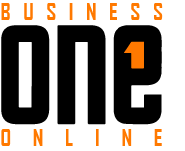If you want to find buyers or sell your business, you need to know how much it is worth. Use these four steps to figure it out.
How do you figure out how much your business is worth? Putting a cash figure on your business will come up at some point, whether you’ve been in business for 20 years or are just starting out. But valuing a business can seem hard and confusing if you aren’t a financial expert or don’t have a finance team with a lot of experience.
We’ll talk about why you might need to value your business and show you how to do it with a simple, four-step method.
Why is knowing how much your small business is worth important?
There are many reasons why you might need to figure out how much your business is worth.
The company is on the market.
You are looking for partners.
You want to sell shares of your business.
The business needs a loan from the bank.
You need to know how your business has grown.
Most of the time, you want to value your business for funding or to sell it. When you value your business, you can tell an investor, partner, buyer, or banker that it’s worth X amount and that you’ll have to pay Z if you want Y percent of it.
When showing to investors and buyers, it’s important to have business value. To get their attention, you need to show them how valuable your business is. How can an investor know how much money to invest in your business if you can’t show them how much it’s worth?
How to figure out how much your business is worth
There are a few ways to figure out how much your business is worth. The multiples method and the discounted cash flow (DCF) method are the two most popular.
- Method of multiples
The multiples method is based on the idea that similar businesses sell for the same amount. For this method to work, you would need another business in your field that just sold. Divide the price by the company’s total sales, EBIT (earnings before interest and taxes), or EBITDA (earnings before interest, taxes, depreciation, and amortization). You’ll end up with a number, which is the multiple. Next, multiply the multiple by your company’s sales, EBIT or EBITDA to get a value.
- DCF method
The DCF method does not take into account how other businesses do. Instead, it looks at the expected cash flow of your business. You will give your best estimate of how much money will come in over the next three to five years. Then, you’ll use a method to figure out the present value of all of these cash payments.
Present value is a way to compare how much money an investment will make in the future to how much interest they would have made if they had just kept their money. It uses a discount rate, which is the likely interest rate the owner could have gotten on the money if he or she had saved it. If the present value of your business is more than the amount you’re investing, it’s a good investment.
Using expected cash flows for the next three years, the method is:
Value = Cash Flow in Year 1 plus Cash Flow in Years 2 and 3
(1+ rate of discount) (1+ rate of discount)2 (1+ rate of discount)3How to figure out how much your business is worth
We’re focused on the multiples way because it’s easier and more commonly used to figure out how much a business is worth. Follow these four steps to find out how much your business is worth:
Step 1: Forget about the value of your business’s cash assets.
Unless you are a certified professional accountant or a financial genius, you may have confused the value of an object with the value of a business. In fact, these two things are not the same at all.
Here’s the most usual mistake:
Let’s say your business has a $500,000 office building, $100,000 worth of goods and products, $200,000 in cash backing, and $85,000 worth of trucks.
You have $885,000 worth of cash assets.
That is how much cash you would get if you sold everything right now. That is how much your business is worth.
Even though all of the above may be true, that’s not what a business value is. It doesn’t matter how much your business is worth; what matters is how much cash is tied up in it. A buyer doesn’t care how much they can make by buying your office block. They want to know how much money they can make from the goods and services that are made there.
Step 2: Figure out how much money you can make by looking at your gross income and all of your expenses.
Profits show how valuable your business is.
A business’s value is based on how much money it makes now and in the future. A person who wants to buy your business wants to know how much money they can expect to make if they do.
Your salary is part of both your gross income and your spending payments. But we’re only talking about your base working pay, not everything you make from the business. We’re looking at net profit.
But we need more than that. A business isn’t worth what it makes in a single year. We also need to think about two other important things when figuring out how much your business is worth:
Multiples: Multiples show how long you will live. If your business is worth selling, you don’t expect it to go out of business in a year. How long do you think it will keep going and make buyers (or new owners) money? Multiples range from two to ten in the world of small business. This number is completely based on how risky the business is and how big it is. Larger companies with strong roots and expected lifespans in the decades or centuries will probably get high ratios.
But for a normal small or medium-sized business, a multiple between 2 and 10 is the average. You multiply your net income by a fair number for your business.
Changes in profitability: A business probably won’t make the same amount of money every year. When figuring out how much your business is worth, you have to figure out how much growth or profit loss you can expect over the time you use your multiple. To do this, you’ll need to look at your company’s financial history (if you have it), the estimated growth of your market, and the progress of your rivals.
“If you haven’t kept good financial records in the past, it can take some time to put together old data, which is often a good place to start. But if you have past data, you can often put together a financial model for a small business in a week or two, according to Abir Syed, co-founder of UpCounting. “The model can be put together in as little as a day or two for very simple businesses where all the data is easy to get.”
Step 3: Calculate the value.
This is the step that everyone dreads: doing the math needed to figure out how much your small business is worth.
“If you keep good books, it shouldn’t take long,” said finance writer Jack Choros. “But if you’re in the middle of selling off capital assets because you’re getting ready to sell your business as part of an exit strategy, it could take you months just to get ready to do the maths.”
There are four parts to figuring out how much your business is worth:
Figure out what is your cash income.
To figure out your net income, take the gross profit of your small business and remove all of the costs. Say, for instance, that your business made $750,000 and spent $500,000 on things like equipment, trips, supplies, and wages. We have $250,000 left.
- Look at multiples.
As we’ve already said, the number you can expect to get is lower the risky or smaller the business is. To figure out your unique multiple, you have to be willing to guess and use your own judgment. There is no set way to find a chosen number, which is a shame. Instead, you should stick to a few general rules:
Find out about your field. How much have businesses like yours sold for in the past?
How good is the cash part of your business?
Is it steady enough to ask for a bigger multiple?
What will happen to the business when you leave (if you are selling)?
Do you have any cash that you can count on for the next few years?
How big is your customer base, and how well do you get along with your suppliers?
You have to decide what your multiple should be based on what you see in your variables. Here’s a basic guide:
A one-person business isn’t likely to sell for more than three times what it costs to run. Most businesses that make less than $500,000 a year cap out at five. Only big companies with a net income of more than $500,000 can hope to hit a multiple of 10.
To return to our example: We make a net profit of $200,000 a year. We have costs of $500,000, which means we need a good amount of workers. Let’s say, for this case, that we are in the second group, which gives us a multiple between 2 and 5. We’ll go with four, which is in the middle, giving us a value of $1 million right now.
Now, increase the business’s value based on how much it could grow. Even though it’s not hard to find this information, it will take time and effort to make sure it’s correct. You’ll need to know the following:
Your own past growth (or the growth of your rivals, if you don’t have any of your own)
The growth of your market
The most important factor is growth over time. It’s hard proof that your business has grown in the past. Track how your earnings have changed by looking at them. For our case, let’s keep things simple:
In the last five years, the profit of the company we’re using as an example has gone up by about 8% to 12%.
We put a value on our business if it grows by 10% per year over the multiple of four chosen.
- Figure out your market.
Your market has a big impact on how profitable you will be in the years to come. For instance:
If you’re in a market that’s pretty stable and well-known, it’s usually best to use past numbers, since there won’t be much change.
If you move to a new market, you have a great chance to make a lot more money.
- Figure out how fast your business could grow.
Compare the growth rate of your business to that of your market. Say that last year your market grew by 15% and your business grew by 14%. You now have good evidence to show investors and buyers that they can expect the same growth rates that industry experts have predicted.
Tip: You can evaluate market growth and how it might affect your business on your own, but you might also want to get help from financial accounting experts or get a second opinion from other business owners in your network.
- Add plans for growth.
Back to our $1 million case, we are not in a new market; we are in the accounting business. We’ll use past data to figure out our growth because the accounting field as a whole isn’t likely to grow faster than our made-up business.
Add 10% to the net income every year. To make sure your numbers are correct, remember to multiply by small amounts instead of adding 10 percent to your current number.
Year 1: $250,000
Year 2: $275,000
Year 3: $302,000
Year 4: $332,000
So, the value of the company as a whole is now $1,160,250. Now, our business is worth $1,160,250 to investors and buyers, right?
Step 4: Think about your market value.
Your value is a guide. You’ve made an estimate that you can show to investors and buyers to give them a good answer to the question “What is your business worth?” But that doesn’t mean that your business is worth as much as you think it is.
In the end, the market will decide how much your business is worth. “Market value is often a very good way to estimate value because it is based on how everyone else sees it and all the other information that is available,” Syed said.
For example, we’ve put a value of $1.1 million on our sample business. To continue with our story:
We meet with buyers and investors more than once. Even though we say our business is worth $1.1 million, we can’t get more than $1 million. The buyers agree with the value to some extent, but they don’t agree with the full number.
Our business is now worth $1 million.
If you can’t get a buyer or investor to pay the full estimate amount, then it’s not a good deal. The market decides how much your business is worth in total. If buyers don’t think your business is worth $1.1 million, it’s not worth $1.1 million.
Even if you’ve done all the right maths to make sure it’s a good investing deal, the real value of your business lies with investors or possible buyers.
An estimate can be just the start.
After figuring out how much your business is worth, you may be ready to sell it or bring in partners. If the buyer or investor agrees with your price, you must now discuss the deal. Besides the valuation, you have to make a lot of other choices, such as the terms, limits, and time of the deal.
You can’t be stubborn with your numbers if you need an investment to live or can’t wait to sell. You might have to bring them down.
“A business is worth only what the market is willing to pay for it. If your industry has fallen on hard times, you may put a much higher value on your business than the market would,” Choros said. “Even if your name is worth a lot more money or your accounting records show that you are worth more, things like time and the greater need for your business in the market still matter. In business, influence is always the key. Most of the time, you don’t get what you deserve; you get what you can bargain for.”
If you just want to find out how much your business is worth for your own information, keep this information in case you ever need it to get a loan or invest. To add more value to your business, the next step is to make your predictions come true or even beat them.
Also read : Which Oil is Best for Skin Brightening?







